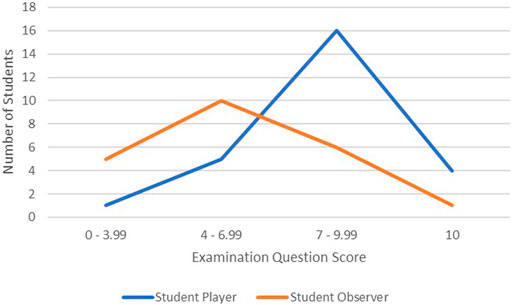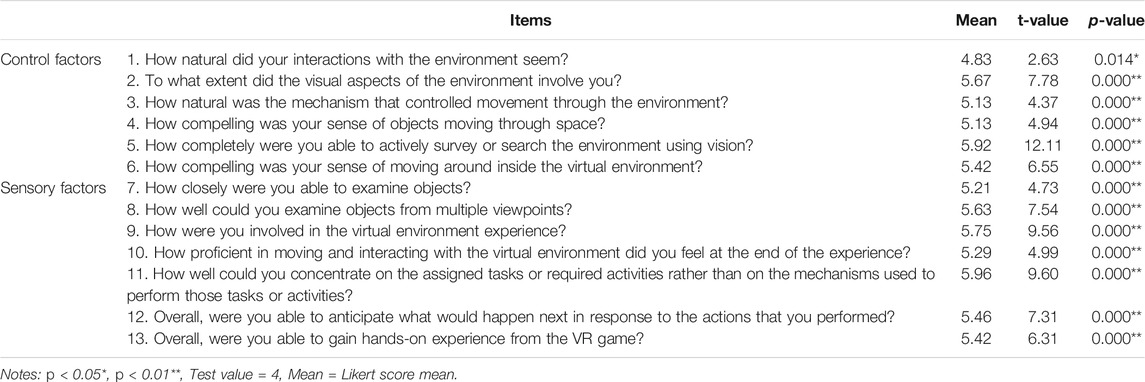A Simulation Design of Immersive Virtual Reality for Animal Handling Training to Biomedical Sciences Undergraduates
- 1Division of Education, School of Biomedical Sciences, Faculty of Medicine, The Chinese University of Hong Kong, Shatin, Hong Kong
- 2Information Technology Services Center, The Chinese University of Hong Kong, Shatin, Hong Kong
- 3Department of Computer Science and Engineering, Faculty of Engineering, The Chinese University of Hong Kong, Shatin, Hong Kong
- 4Department of Information Engineering, The Chinese University of Hong Kong, Shatin, Hong Kong
- 5Centre for Bioethics, The Chinese University of Hong Kong, Shatin, Hong Kong
Background: One area of biomedical research concerns is applying new treatments to cure human diseases, moving bench-side research to the bedside practice. While using animal models is crucial in the research process, researchers should strictly adhere to the moral 4R framework to protect animal welfare—replacement, reduction, refinement, and responsibility. Virtual reality (VR) applies computer technology to create a simulated environment, allowing players to immerse and interact with animated 3D contexts. We developed a virtual animal-holding simulator (ViSi) using immersive virtual reality technology for students studying in the undergraduate biomedical sciences programme. The specific objectives of the paper are to 1) describe the development of the VR courseware for animal training and 2) describe the learning experience among students.
Method and Result: An evaluation of the courseware was conducted among Year one and two biomedical sciences students. Students who participated in ViSi responded positively about their involvement in the virtual environment experience and their concentration on the assigned task.
Discussion: ViSi is a reliable simulation technology that can train animal handling skills, which replaces real animals, while learners’ multi-cognition could still be enhanced with simulation training. Thus, the impact of immersive VR technology integrated into skills training is promising, although few technical problems are to be resolved.
Introduction
Biomedical research has been developed over the past three decades. One of the essential purposes is to investigate the treatment of human diseases for the sake of patient wellness (Caron-Flinterman et al., 2005), especially in the fields of regenerative medicine (Mason and Manzotti, 2010) and vaccine development (Koff and Schenkelberg, 2020). During undergraduate biomedical science training, students receive integrated and multidisciplinary training ranging from research activities (Clark, 1997) to professionalism and inter-professional collaboration (McNair, 2005; Baingana et al., 2010).
Animal models are commonly used in biomedical research to investigate the mechanism of disease development and explore the therapeutic advancement of effective treatments. Even though the translation of animal experiments from bench to bedside for clinical trials is less than 8% (Mak et al., 2014; Polejaeva et al., 2016), animal studies are a core element of studying the physiological responses. While the 3R principle has long been applied in contemporary scientific practice (Russell et al., 1959), the 4R rules—replacement, reduction, refinement, and responsibility—have been adopted recently to improve the quality of care for experimental animals (Arora et al., 2011). The new 4R framework advocates reduction—to reduce the usage of animals in the laboratory; replacement—to apply an alternative technique to minimise animal suffering; refinement—to fine-tune experimental procedures, and responsibility—to ensure on-going training responding to scientific significance and accuracy for the use of laboratory livestock in academic research.
Immersive virtual reality (VR) technology is a psychological perception that is generated and stimulated by a computer-generated interface to make the user feel “being there” inside an isolated three-dimensional (3D) environment (Biocca and Delaney, 1995; Seth et al., 2011). It develops a perceptual learning style to stimulate, organise, interpret, and memorise to-be-learned information (Kratzig and Arbuthnott, 2006). The concept of simulation supports the integration of professional skill training with theories through the application. In the past decade, VR has been applied to work-based professional training sites to enable trainees to obtain experience-dependent enhancements, such as clinical skills in nursing practice (Kilmon et al., 2010), surgical procedures (Tergas et al., 2013), aviation (De Repentigny et al., 2003), and police and military training (Shendarkar et al., 2008). When commercial VRR hardware becomes affordable (Earnshaw, 2014), it enables rapid adoption and dissemination in academics (Zyda, 2005:; Riva et al., 2007).
The specific objectives of the paper are to 1) describe the development of the VR courseware for animal training and 2) describe the learning experience among students.
Materials and Methods
ViSi Simulation
VR can be broadly applied to modern pedagogical exercises supporting active learning processes and cognitive knowledge acquisition (Seaborn and Fels, 2015; Ngan et al., 2017). This is a novel study incorporating VR simulation to teach research technique in an undergraduate biomedical sciences program to the best of our knowledge. Our earlier work described the courseware development’s conceptual theory and instructional design (Tang et al., 2020). In brief, the courseware, named virtual animal holding gamified simulator (ViSi), is designed in the context of an animal holding facility, simulating the setting of the technical training of intraperitoneal injection to laboratory mice. It consists of two game levels or learning environments. The first learning environment related to the preparation room in the animal holding facility requires the learner to put on essential personal protective equipment. The second learning environment related to the experimental room for handling animals and performing experimental procedures.
ViSi is a learner-centred game design in which the digital output of the learner’s interaction with the VR environment is displayed on the monitor that allows parallel teaching—the student working with the VR environment while others observe the process—could take place (Figure 1). The courseware offers two benefits: firstly, it allows students to comment on the right actions or the wrongdoings committed by their classmates; secondly, it enhances students’ contextual understanding of using experimental animals in the “virtual facility”. (Figures 2, 3).
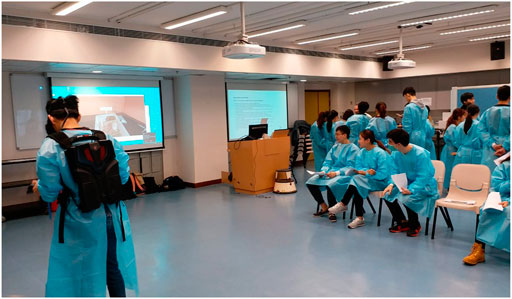
FIGURE 1. The student player wore the VR gear and played the ViSi. The classmates sat aside engaged in the learning process by discussing the accurate or wrongdoing behaviours performed by the player.
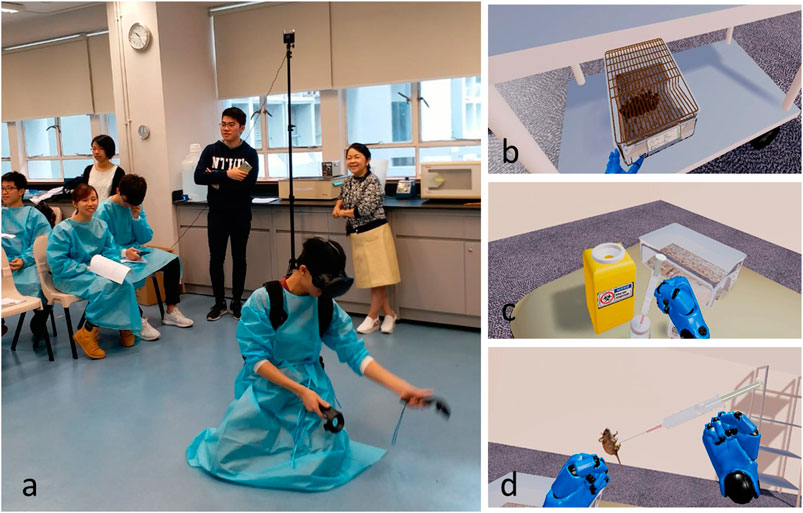
FIGURE 2. The student player used the pair of the controllers for training the procedures of intraperitoneal injection to the mouse. The student player (A) concentrated on the game; (B) located the animal cage on the bench; (C) drew the drug from the bottle, and (D) held the mouse and performed intraperitoneal injection.
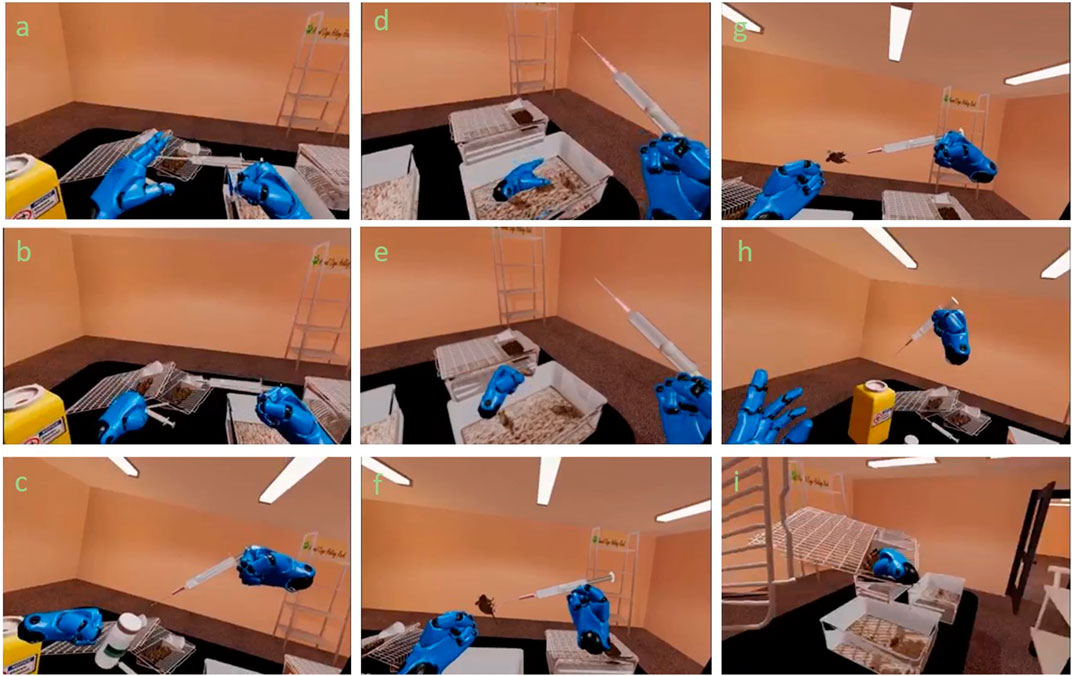
FIGURE 3. ViSi Game-Mice Injection. The student player was instructed to perform the intraperitoneal injection in the ViSi. (A–C): After opening the cages, the player took the syringe, removed the bottom cap and aspired to the appropriate volume of drug in the syringe. (D–F): The player grasped a mouse from the cage, restrained it in a proper position and prepared for the injection process. (G–I): The player completed the task, put the used syringe into the sharps disposal yellow container and covered the cage.
Sampling and Recruitment
The study was approved by the Survey and Behavioral Research Ethics Committee of the Chinese University of Hong Kong.
The ViSi simulation was adopted in a skill-based training course, “Technique in Biomedical Research”, in the 2020–21 academic year. Year one and two students majoring in BSc in Biomedical Sciences enrolled in the course were invited to use the ViSi simulation. The entire class of 50 students attended a 90-min regular practical class using ViSi or observing at the side. Owing to the requirement for social distancing during the covid-19 pandemic, we grouped the students into two 90-min practical sessions. With the time constraint in each practice session, not all students could experience ViSi in this study. A possible solution is to decrease the simulation period to 5 min to prevent uncomfortable disorientation from completing each session in either the preparation or experimental room, thereby allowing more students to experience ViSi.
Students were invited to play the courseware and complete a self-administrated e-survey scoping the experiential learning experience on a voluntary basis. Participants were informed that their participation was entirely voluntary and would not affect their course assessment.
Study Measures and Analysis
Firstly, student performance in the final examination was assessed. One question was designed to examine technical and procedural knowledge in animal handling, which was used to evaluate the impact of courseware on cognitive learning. Secondly, experiential perception of ViSi was measured by two subscales adapted from a validated measure from Witmer and Singer (1998) 1) The presence subscale consisting of six items measures the capability of an individual to felt immersed in the simulation; and 2) the sensory subscale consisting of seven items measures how multisensory reception influences learning. Students were asked to rate their experience on each items using a 7-point Likert scale ranging from “Not at All” to “Completely.” At the end of the survey, Students’ perceptions of the learning outcomes from the ViSi were also surveyed using institutional standardised post-course evaluation. The internal consistency coefficient (Cronbach’s alpha) of the scale was 0.908. Descriptive results were reported in this paper. A one-sample t-test was conducted to measure central tendency.
Results
Among 50 students, 26 had simulation experience (student player). At the same time, the other 24 classmates joined as audiences to discuss and point out the wrongdoings and appropriate actions of the participants in the ViSi simulation (student observer).
Student Performance in the Examination
Figure 4 shows the distribution of the examination score between the student player and observer. The overall mean and standard deviation of the student player and observer score are 7.46, 1.87, 6.20, and 2.53, respectively. There were more than 20 students who scored over seven among student players and seven among student observers. Student players scored higher than the observer group, although no statistically significant difference was observed due to the small sample size.
Experiential Perception of ViSi
Table 1 shows students’ positive feedback on using ViSi. The mean score of the items ranged from 4.83 to 5.96. The figures indicate a significant difference between the item mean scores with a test mean value of 4. Thus, the perceptual learning experience with ViSi is positive, reflected in the mean value of over 4.83. In the presence subscale, the majority student player strongly agreed that they felt actively got involved (mean = 5.92) and moved around in the VR environment (mean = 5.67), although the feeling was not too natural. In the sensory subscale, the majority student player concentrated on the assigned tasks (mean = 5.96) and examined the objects from multiple viewpoints (mean = 5.63). Student players largely agreed that they gained hands-on experience from the ViSi.
Discussion
This study aimed to set up an innovative virtual reality environment to promote the safe learning of animal handling skills using VR technology. The past teaching strategies in the teaching animal handling techniques depend on physical practice. However, in the contemporary time advocating for animals’ welfare, educators need to consider any alternative way to fulfil the ethical guidelines and duties (3). Specifically, our ViSi was designed to apply the 4R principles, introducing the moral concepts of animal handling to undergraduate biomedical sciences training. Our results supported the idea that problem-solving tasks incorporated in ViSi enhance examination and experiential learning among students. Although there was no significant difference could be tested due to the small sample size, students engaged in learning using the simulation.
Earlier research show that the implementation of VR simulation is feasible for facilitating technique learning in biomedical research and assessing competencies, including knowledge, attitudes, principles, and skills in health professional education (Konge et al., 2014; Khan et al., 2015; Khan al., 2017). Similarly, ViSi simulation allows students to learn by application, which produces a higher level of engagement using virtual animals. The current literatures show that animal research awareness among students is scarce. A survey studied Indian medical undergraduate “students” views on using animals in basic medical research. About one-tenth were aware of ethical guidelines regarding animal research and believed that animal research required stringent regulations (Nerlekar et al., 2018). Some Brazilian students were uncomfortable using animals during practical classes and refused to stay in the classroom (Rochelle et al., 2016). These responses show the requirement for more educational efforts in addressing ethical reflections that can arise through conflicting situations and low moral awareness.
An advantage of using VR simulation in perceptual learning is that students are allowed exposure to a fun atmosphere, which helps to increase learning concentration and retention time for memorisation and prolonged sensory constellations over hands-on work (Goswami, 2008). Consistent with another study (De Jong and Van Joolingen, 1998), our students reported that they engaged in experiential learning, incorporated with game elements that require problem-solving tasks. Specifically, students benefitted by implementing the theoretical knowledge in a simulated setting. However, these advantages are not provided in the traditional classroom teaching medium, mainly delivered by PowerPoint presentations and textbooks (Yahaya and Ahmad, 2017). The majority of participants agreed that they could concentrate on the assigned tasks rather than on the procedural mechanisms to perform those tasks or activities during the simulation. From the observation in the practical sessions, both sides of the students are excited, engaged and enjoyed the digital simulation.
Current students were adaptive to information technology. Most students in our study reported high satisfaction in the sensory reception and seamlessly integrated into the virtual reality, suggesting that the courseware provides them with an immersive and interactive experience. In the ViSi, we adopted Unreal Engine 4 (UE4) to create the VR scene, which provides an actual render process, creating a “lifelike” and immersive experience when the student is inside the task environment. The incorporation of the fun search atmosphere into knowledge development can also enhance students’ learning motivation. Furthermore, it provides a new era of strategic pedagogy for other broad-based techniques in research activities that encourage more students to participate in biotechnology industries with interest. Additionally, it improves the quality of teaching, promotes active learning among students, uses different skill training methods during practical sessions, and promotes after-class discussions between students and teachers, rather than a one-way effort. Although they cannot sense the touching animals, an intrinsic limitation of controllers, it is not surprising that students felt naturally immersed in the simulation due to the leverage of gamified setting simulation.
Conclusion
ViSi represents an excellent example of how VR guides and enhances learners’ cognition of the virtual environment. More importantly, it arouses the learner’s critical thinking, stimulates problem-based learning, and shares the learning experience with peers. The impact of VR technology integrated into skills training is promising, although few technical problems are required to be resolved. For example, the learner may feel dizziness or cybersickness after using the head-mounted device, and game engine software has insufficient detection of the learner’s posture. VR is in-house developed courseware, which incorporates conventional didactic pedagogy and is novel from both teachers’ and students’ perspectives. It is a reliable training material that can help students understand animal handling skills and replace the usage of real animals and enhance learners’ multi-cognition with the use of simulation. Students appreciated the early exposure to animal handling, especially for drug administration, and found it an opportunity to acquire the humanistic side of science in animal ethics. In future, VR technology can be a supportive teaching pedagogy for perceptual learning in technical practice.
Data Availability Statement
The datasets generated during and/or analysed during the current study are available from the corresponding author on reasonable request.
Ethics Statement
The studies involving human participants were reviewed and approved by the Survey and Behavioural Research Ethics. Written informed consent for participation was not required for this study in accordance with the national legislation and the institutional requirements.
Author Contributions
FT is the chief project investigator who oversees and implements the project. AL and JC managed the logistic flow of the practical session. FC contributed to the data collection and analysis. FT and ON made a substantial contribution to the manuscript writing. RL, RS and JC were computer engineers setting up the ViSi.
Funding
This project was funded by a Courseware Development Grant scheme (2016–17) and (2019–22), the Chinese University of Hong Kong. This project was supported by the School of Biomedical Sciences, the Chinese University of Hong Kong.
Conflict of Interest
The authors declare that the research was conducted in the absence of any commercial or financial relationships that could be construed as a potential conflict of interest.
References
Arora, T., Mehta, A. K., Joshi, V., Mehta, K. D., Rathor, N., Mediratta, P. K., et al. (2011). Substitute of Animals in Drug Research: An Approach towards Fulfillment of 4R's. Indian J. Pharm. Sci. 73 (1), 1–6. doi:10.4103/0250-474X.89750
Baingana, R. K., Nakasujja, N., Galukande, M., Omona, K., Mafigiri, D. K., and Sewankambo, N. K. (2010). Learning Health Professionalism at Makerere University: An Exploratory Study Amongst Undergraduate Students. BMC Med. Educ. 10 (1), 1–10. doi:10.1186/1472-6920-10-76
Biocca, F., and Delaney, B. (1995). “Immersive Virtual Reality Technology,” in Communication in the Age of Virtual Reality. Editors F Biocca, and B Delaney, 53–124.
Caron-Flinterman, J. F., Broerse, J. E. W., and Bunders, J. F. G. (2005). The Experiential Knowledge of Patients: A New Resource for Biomedical Research?. Soc. Sci. Med. 60 (11), 2575–2584. doi:10.1016/j.socscimed.2004.11.023
Clark, B. R. (1997). The Modern Integration of Research Activities with Teaching and Learning. J. Higher Edu. 68 (3), 241–255. doi:10.1080/00221546.1997.11778982
De Jong, T., and Van Joolingen, W. R. (1998). Scientific Discovery Learning with Computer Simulations of Conceptual Domains. Rev. Educ. Res. 68 (2), 179–201. doi:10.3102/00346543068002179
De Repentigny, L., Pearson, G., and Wilks, B. (2003). “Using Simulation as an Effective Runway Incursion Prevention Strategy,” in AIAA Modeling and Simulation Technologies Conference and Exhibit, Austin, TX, August 11–14, 2003. Editors B. Heesbeen, J. Hoekstra, and M. V. Clari (Austin, TX: Aerospace Research Central). doi:10.2514/6.2003-5599
Goswami, U. (2008). Principles of Learning, Implications for Teaching: A Cognitive Neuroscience Perspective. Philos. Educ. 42 (3‐4), 381–399. doi:10.1111/j.1467-9752.2008.00639.x
Khan, R., Aydin, A., Khan, M. S., Dasgupta, P., and Ahmed, K. (2015). Simulation-based Training for Prostate Surgery. BJU Int. 116 (4), 665–674. doi:10.1111/bju.12721
Khan, R., Scaffidi, M. A., Walsh, C. M., Lin, P., Al-Mazroui, A., Chana, B., et al. (2017). Simulation-Based Training of Non-technical Skills in Colonoscopy: Protocol for a Randomized Controlled Trial. JMIR Res. Protoc. 6 (8), e153. doi:10.2196/resprot.7690
Kilmon, C. A., Brown, L., Ghosh, S., and Mikitiuk, A. (2010). Immersive Virtual Reality Simulations in Nursing Education. Nurs. Educ. Perspect. 31 (5), 314–317.
Koff, W. C., and Schenkelberg, T. (2020). The Future of Vaccine Development. Vaccine 38 (28), 4485–4486. doi:10.1016/j.vaccine.2019.07.101
Konge, L., Albrecht-Beste, E., and Nielsen, M. (2014). Virtual-reality Simulation-Based Training in Ultrasound. Ultraschall Med. 35 (2), 95–97. doi:10.1055/s-0034-1366191
Krätzig, G. P., and Arbuthnott, K. D. (2006). Perceptual Learning Style and Learning Proficiency: A Test of the Hypothesis. J. Educ. Psychol. 98 (1), 238–246. doi:10.1037/0022-0663.98.1.238
Mak, I. W., Evaniew, N., and Ghert, M. (2014). Lost in Translation: Animal Models and Clinical Trials in Cancer Treatment. Am. J. Transl. Res. 6 (2), 114–118.
Mason, C., and Manzotti, E. (2010). Regenerative Medicine Cell Therapies: Numbers of Units Manufactured and Patients Treated between 1988 and 2010. Regenerative Med. 5 (3), 307–313. doi:10.2217/rme.10.37
McNair, R. P. (2005). The Case for Educating Health Care Students in Professionalism as the Core Content of Interprofessional Education. Med. Educ. 39 (5), 456–464. doi:10.1111/j.1365-2929.2005.02116.x
Nerlekar, S., Karia, S., Harshe, D., Warkari, R., and Desousa, A. (2018). Attitude and Knowledge of Undergraduate Medical Students towards the Use of Animals in Medical Research: An Exploratory Study. J. Clin. Diagn. Res. 12 (7), JC04–JC06. doi:10.7860/jcdr/2018/32260.11768
Ngan, O. M. Y., Tang, T. L. H., Chan, A. K. Y., Chen, D. M., and Tang, M. K. (2017). Blended Learning in Anatomy Teaching for Non-medical Students: An Innovative Approach to the Health Professions Education. Health Professions Edu. 4 (2), 149–158. doi:10.1016/j.hpe.2017.11.001
Polejaeva, I. A., Rutigliano, H. M., and Wells, K. D. (2016). Livestock in Biomedical Research: History, Current Status and Future Prospective. Reprod. Fertil. Dev. 28 (2), 112–124. doi:10.1071/rd15343
Riva, G., Mantovani, F., Capideville, C. S., Preziosa, A., Morganti, F., Villani, D., et al. (2007). Affective Interactions Using Virtual Reality: The Link between Presence and Emotions. CyberPsychology Behav. 10 (1), 45–56. doi:10.1089/cpb.2006.9993
Rochelle, A. B. F. A., Pasian, S. R., Silva, R. H. A., and Rocha, M. J. A. (2016). Perceptions of Undergraduate Students on the Use of Animals in Practical Classes. Adv. Physiol. Edu. 40 (3), 422–424. doi:10.1152/advan.00019.2016
Russell, W., Burch, R., and Hume, C. (1959). The Principles of Humane Experimental Technique. London: Methuen & Co. Ltd.
Seaborn, K., and Fels, D. I. (2015). Gamification in Theory and Action: A Survey. Int. J. Human-Computer Stud. 74, 14–31. doi:10.1016/j.ijhcs.2014.09.006
Seth, A., Vance, J. M., and Oliver, J. H. (2011). Virtual Reality for Assembly Methods Prototyping: A Review. Virtual Reality 15 (1), 5–20. doi:10.1007/s10055-009-0153-y
Shendarkar, A., Vasudevan, K., Lee, S., and Son, Y.-J. (2008). Crowd Simulation for Emergency Response Using BDI Agents Based on Immersive Virtual Reality. Simulation Model. Pract. Theor. 16 (9), 1415–1429. doi:10.1016/j.simpat.2008.07.004
Tang, F. M. K., Lee, R. M. F., Szeto, R. H. L., Cheung, J. C. T., and Ngan, O. M. Y. (2020). Experiential Learning with Virtual Reality: Animal Handling Training. BMC Innovation Edu. 2 (1), 1–9. doi:10.1186/s42862-020-00007-3
Tergas, A. I., Sheth, S. B., Green, I. C., Giuntoli, R. L., Winder, A. D., and Fader, A. N. (2013). A Pilot Study of Surgical Training Using a Virtual Robotic Surgery Simulator. JSLS 17 (2), 219–226. doi:10.4293/108680813x13654754535872
Witmer, B. G., and Singer, M. J. (1998). Measuring Presence in Virtual Environments: A Presence Questionnaire. Presence 7 (3), 225–240. doi:10.1162/105474698565686
Yahaya, W. A. J. W., and Ahmad, A. (2017). Virtual Reality Courseware towards Achievement of Transfer Learning Among Students with Different Spatial Ability. J. Telecommun. Electron. Comput. (Jtec). 9, 2–11.
Keywords: immersive virtual reality, 4R principles, simulation, animal handling, biomedical research, undergraduate, teaching and learning
Citation: Tang FMK, Lee RMF, Szeto RHL, Cheng JKK, Choi FWT, Cheung JCT, Ngan OMY and Lau ASN (2021) A Simulation Design of Immersive Virtual Reality for Animal Handling Training to Biomedical Sciences Undergraduates. Front. Educ. 6:710354. doi: 10.3389/feduc.2021.710354
Received: 16 May 2021; Accepted: 15 June 2021;
Published: 29 June 2021.
Edited by:
Patrachart Komolkiti, Chulalongkorn University, ThailandReviewed by:
Pawana Chuesiri, Chulalongkorn University, ThailandKittiphan Techakittiroj, Chulalongkorn University, Thailand
Copyright © 2021 Tang, Lee, Szeto, Cheng, Choi, Cheung, Ngan and Lau. This is an open-access article distributed under the terms of the Creative Commons Attribution License (CC BY). The use, distribution or reproduction in other forums is permitted, provided the original author(s) and the copyright owner(s) are credited and that the original publication in this journal is cited, in accordance with accepted academic practice. No use, distribution or reproduction is permitted which does not comply with these terms.
*Correspondence: Florence Mei Kuen Tang, florencetang@cuhk.edu.hk
 Florence Mei Kuen Tang
Florence Mei Kuen Tang Ray Mau Fung Lee2
Ray Mau Fung Lee2  Justin Chak Ting Cheung
Justin Chak Ting Cheung Olivia Miu Yung Ngan
Olivia Miu Yung Ngan